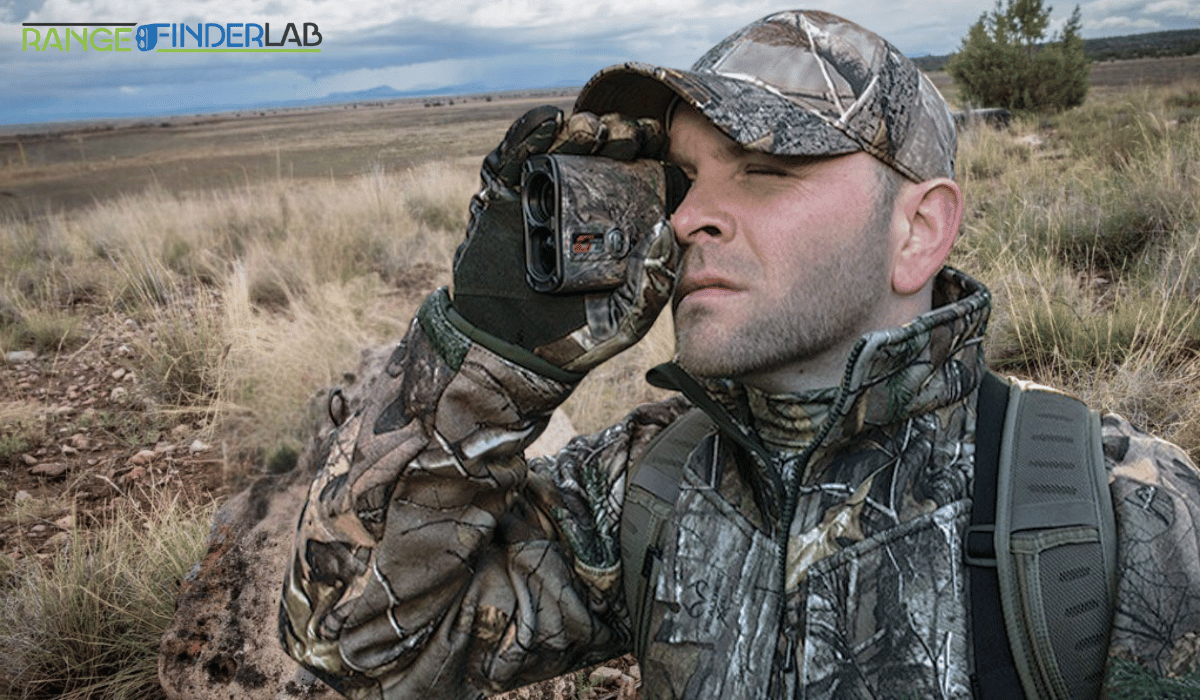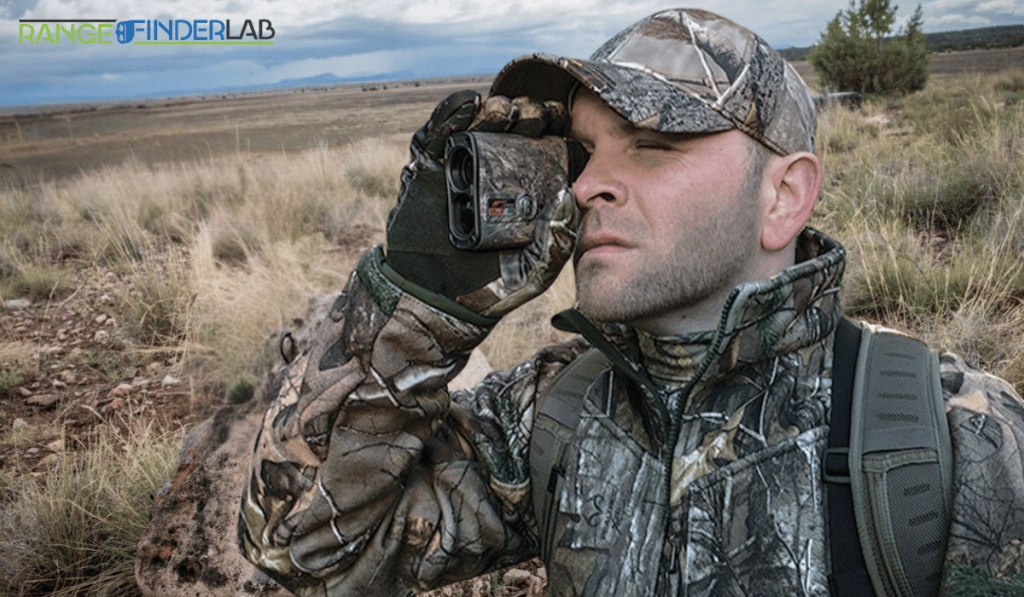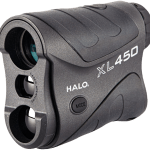

When considering a rangefinder for hunting, several vital features emerge as essential. Maximum range and accuracy are paramount, for they dictate the effectiveness of the rangefinder across various hunting scenarios. Optics quality and magnification are critical for clear visibility and precise targeting. The device’s size, weight, and portability are significant, especially in challenging terrains and long-duration hunts. Durability and weather resistance are non-negotiable, given the often harsh and unpredictable outdoor conditions. Additional aspects like battery life, ease of use, display clarity, angle compensation, and ballistic features further refine the selection process, tailoring the rangefinder to the specific needs and preferences of the hunter.
As we delve deeper into the world of rangefinders, we will explore these features in detail, offering insights and practical advice to help you choose the ideal rangefinder for your hunting adventures. Mastering the art of hunting begins with understanding your tools, and a rangefinder is undoubtedly a key player in this quest.
Table of contents
- Understanding Rangefinders: A Brief Overview
- Key Features to Consider in a Hunting Rangefinder
- A Unique Perspective on Choosing Rangefinders
- Personal Opinion on Selecting Rangefinders
- How to Test and Evaluate a Rangefinder
- Frequently Asked Questions (FAQs)
- Conclusion: Making the Right Choice in Hunting Rangefinders
Understanding Rangefinders: A Brief Overview
Rangefinders have revolutionized the way we engage with distance, especially in the realm of hunting. To fully appreciate their value, it’s essential to grasp the basic functionality and the various types of rangefinders available.
Basic Functionality of Rangefinders
At its core, a rangefinder measures distance. The principle is straightforward yet ingenious. Most hunting rangefinders use laser technology – they emit a laser beam towards the target, which reflects the device. The rangefinder then calculates the distance based on the time it takes for the laser to return. This process happens almost instantaneously, providing hunters with quick and accurate distance readings.
Accuracy is the cornerstone of a rangefinder’s functionality. High-quality models can provide precise distance measurements within a few yards, even over long distances. This precision is critical in hunting, where accurate shot placement is essential for ethical hunting practices.
Different Types of Rangefinders
Rangefinders come in various types, each catering to specific needs and preferences. Understanding these differences is critical to selecting the right rangefinder for your hunting style.
- Laser Rangefinders: The most popular among hunters, laser rangefinders are prized for their accuracy and ease of use. They work well in various conditions and are ideal for measuring long distances.
- Optical Rangefinders: These are the traditional type, using manual methods to calculate distance. They don’t require batteries, which can be a plus in remote hunting locations. However, they lack precision and ease of use compared to their laser counterparts.
- Ballistic Rangefinders: A step up from standard laser models, ballistic rangefinders consider factors like elevation, temperature, and even wind speed to suggest the best shot placement. They’re ideal for seasoned hunters who want to incorporate environmental variables into their shot planning.
- Archery Rangefinders: Specifically designed for bowhunters, these rangefinders often feature angle compensation technology, which is crucial for accurate shots in uneven terrain.
- Golf Rangefinders: While primarily designed for golf, some hunters choose these for their short-range accuracy. They typically don’t have the long-range capabilities or rugged build of hunting-specific models.
Each type of rangefinder has unique advantages, and the choice ultimately depends on your hunting environment, the game you’re pursuing, and your preferences. As we delve deeper into the essential features to look for in a hunting rangefinder, keep these types in mind to align your needs with the right technology.
Key Features to Consider in a Hunting Rangefinder
When selecting a rangefinder, certain features are crucial for an effective and efficient hunting experience. Let’s delve into these critical features:
Maximum Range and Accuracy:
A rangefinder’s primary function is to measure distance, making range and accuracy its most critical features. Look for a rangefinder that offers a maximum range suitable for your typical hunting scenarios, whether dense forests or open plains. Accuracy is vital; a few yards can significantly affect shot placement.
Optics Quality and Magnification:
Clear, sharp optics are essential for spotting and targeting the game. High-quality optics with superior light transmission offer better visibility, especially in low-light conditions common in hunting. Magnification is another aspect to consider; higher magnification helps identify distant targets, but too much can make it hard to stabilize the view.
Size, Weight, and Portability:
A bulky or heavy rangefinder can be cumbersome during long hunts or when moving through rugged terrain. A compact, lightweight rangefinder is preferable, providing easy carrying without sacrificing functionality.
Durability and Weather Resistance:
Hunting often exposes equipment to harsh environmental conditions. A durable rangefinder with good weather resistance ensures reliability and longevity. Look for features like waterproofing and a rugged build to withstand the elements.
Battery Life and Power Options:
A rangefinder with a long-lasting battery is essential, especially on extended trips. Consider models with battery-saving features or the option to use replaceable batteries for prolonged use.
Display and Readability:
The rangefinder’s display should be clear and easily readable in various lighting conditions. Some models offer illuminated displays or adjustable brightness, particularly during dawn or dusk hunts.
Angle Compensation and Ballistic Features:
Angle compensation is valuable for hunters in mountainous or varied terrain. It adjusts the distance based on the angle of the shot, providing more accurate measurements. Ballistic features factor in bullet trajectory and external conditions and are ideal for long-range shooters seeking precision.
Brand Reputation and Warranty:
Investing in a rangefinder from a reputable brand often means better quality and customer support. A good warranty can also provide peace of mind, protecting your investment against defects or issues.
In the next section, we’ll offer a unique insight into the rangefinder selection process, providing a distinctive perspective beyond the usual considerations. Stay tuned for an enlightening discussion on making the best choice for your hunting needs.
A Unique Perspective on Choosing Rangefinders
The journey extends beyond the basic specifications when selecting the ideal hunting rangefinder. Here’s my unique take, focusing on the often-overlooked nuances and emerging trends in the world of rangefinders.
Personal Opinion on Selecting Rangefinders
A rangefinder is not just a tool; it’s a companion in your hunting adventures. My perspective emphasizes the importance of ‘fit.’ It’s not just about the most extended range or the highest magnification but how well the rangefinder aligns with your hunting style and environment. For instance, a bowhunter in dense woodlands might value angle compensation over extreme range capabilities.
There’s also the aspect of user experience. A rangefinder that feels intuitive and comfortable in your hands, with buttons and features easily accessible, can enhance your hunting experience. The less time you spend fumbling with your device, the more you can focus on the hunt.
Insights on Emerging Trends and Overlooked Features
- Connectivity and Integration: We’re trending towards rangefinders that integrate with other devices, such as smartphones or smartwatches. This connectivity can offer enhanced features like GPS mapping, shot recording, and even weather data, providing a more holistic hunting experience.
- Customization Options: Some modern rangefinders allow for personalized settings like ballistic profiles or reticle choices. This customization can significantly improve tailored, precise measurements, especially for seasoned hunters.
- Sustainability and Eco-friendliness: As we become more conscious of our environmental impact, there’s a growing interest in sustainable hunting practices. Rangefinders with eco-friendly features, like solar charging capabilities or constructed with sustainable materials, are gaining attention.
- Ergonomic Design: Often overlooked, a rangefinder’s ergonomic design can significantly impact its usability. A rangefinder that sits comfortably in your hand, with a balanced weight distribution, can reduce fatigue and increase steadiness during long periods of use.
- Augmented Reality (AR) Features: Rangefinders incorporating AR technology are emerging on the horizon. These can overlay information like distance markers or wind direction directly onto the view, providing a more immersive and informative experience.
In conclusion, while the standard features of range, accuracy, and durability are foundational in selecting a rangefinder, considering these additional aspects can significantly enhance your hunting experience. It’s about balancing functionality, user experience, and emerging trends to choose a rangefinder that complements your hunting endeavors.
How to Test and Evaluate a Rangefinder
Choosing the right rangefinder involves more than just reading specifications and reviews. Testing and evaluating a rangefinder in real-world conditions is crucial. Here are some practical tips and advice on thoroughly testing and evaluating a rangefinder’s performance in the field.
Tips for Testing Rangefinder Features
- Check the Accuracy: Test the rangefinder’s accuracy by measuring distances to known points. Compare these readings with a pre-measured or GPS-verified distance. Accuracy is critical, and even minor discrepancies can impact hunting outcomes.
- Evaluate the Optics Quality: Assess the optics’ clarity, brightness, and color fidelity. Test it in various lighting conditions, especially during dawn and dusk, when hunting is often observed. Good optics should provide clear and bright images, even in low light.
- Test for Ease of Use: Evaluate how intuitive and user-friendly the rangefinder is. Can you operate it efficiently with one hand? Are the buttons and functions accessible and responsive? Convenience and ease of use are vital in a hunting environment.
- Assess the Display Readability: Check the display under different lighting conditions. The display should be readable in bright sunlight, overcast conditions, and low light. Pay attention to how quickly the rangefinder provides a reading.
Practical Advice on Evaluating Rangefinder Performance in the Field
- Test in Varied Terrain: Use the rangefinder in different terrains – open fields, dense forests, and hilly areas. This will give you an idea of its versatility and reliability in various hunting scenarios.
- Check the Performance at Maximum Range: Push the rangefinder to its limit—measure distances at or near its maximum range capability to see if it maintains accuracy and clarity.
- Evaluate the Angle Compensation: If your rangefinder has angle compensation, test it on steep angles. This feature is crucial for bow hunters or when hunting in mountainous areas.
- Consider Battery Life: Monitor how long the battery lasts during your testing. A rangefinder that quickly drains its battery can be inconvenient, especially on longer hunting trips.
- Factor in Weather Resistance: Use the rangefinder in different weather conditions. Check how well it performs in rain, fog, or extreme cold. The durability of the rangefinder under these conditions can be a deciding factor.
- Note the Portability: Consider its weight and size while using the rangefinder. Is it easy to carry around your neck or in a pocket? Is it cumbersome or hardly noticeable? Portability can affect its convenience during a hunt.
Using these tips and advice, you can make a well-informed decision by thoroughly testing and evaluating a rangefinder. Remember, a rangefinder is a significant investment for a hunter, and choosing the right one can significantly enhance your hunting experience and success.
Frequently Asked Questions (FAQs)
What is the ideal range I should look for in a hunting rangefinder?
The ideal range depends on your hunting style and environment. A rangefinder of 800 to 1,200 yards is sufficient for most hunting scenarios. However, if you’re into long-range hunting or need to measure vast open spaces, look for rangefinders with a higher maximum range.
How important is angle compensation in a rangefinder?
Angle compensation is crucial if you hunt in mountainous or uneven terrain. It adjusts the distance based on the angle of the shot, which is vital for accuracy in such conditions. For flat terrain hunting, it may be less critical.
Can I use a golf rangefinder for hunting?
While you can use a golf rangefinder for hunting, it may not be optimal. Golf rangefinders are designed for shorter ranges and may lack features crucial for hunting, such as long-range accuracy, durability, and angle compensation.
What makes a rangefinder weather-resistant, and why is it important?
Weather-resistant rangefinders are designed to withstand elements like rain, fog, and dust. This feature is essential as hunting often exposes equipment to harsh outdoor conditions. Look for waterproof or fog-proof certifications.
Is it worth investing in a rangefinder with ballistic features?
Ballistic features are valuable for long-range shooters as they consider bullet trajectory, wind, and other environmental factors. If precision at long distances is a priority, then a rangefinder with ballistic features is a worthwhile investment.
How can I ensure my rangefinder is accurate?
Test your rangefinder’s accuracy by measuring distances to known points or using a GPS device for comparison. Regular calibration and manufacturer-recommended maintenance can also ensure ongoing accuracy.
What’s the difference between a laser rangefinder and an optical rangefinder?
Laser rangefinders use a laser beam to measure distance and are known for their accuracy and ease of use. On the other hand, optical rangefinders estimate distance based on visual cues and are more traditional, requiring manual operation.
How often should I replace the batteries in my rangefinder?
The frequency of battery replacement depends on usage and the rangefinder model. Some rangefinders have power-saving features that extend battery life. Always carry spare batteries during extended hunting trips.
Can rangefinders be used in low-light conditions?
Yes, many modern rangefinders are equipped to perform in low-light conditions. Some models feature illuminated displays or reticles to enhance visibility during dawn and dusk.
Are there legal restrictions on using rangefinders for hunting?
The legality of using rangefinders for hunting varies by region and hunting regulations. It’s important to check local laws and hunting guidelines to ensure compliance.
In summary, selecting the right rangefinder involves understanding its range, accuracy, special features like angle compensation, and how it aligns with your hunting environment and style. Consider these aspects to choose a rangefinder that enhances your hunting experience and success.
Conclusion: Making the Right Choice in Hunting Rangefinders
Pursuing the perfect hunting rangefinder, we’ve journeyed through a landscape of features, technologies, and user needs. As we draw this exploration close, let’s summarize the key points and offer final thoughts and recommendations for your rangefinder selection.
Summary of Key Points:
- Importance of Range and Accuracy: The cornerstone of a good rangefinder is its range and accuracy. Choose a rangefinder that provides the necessary range and precision depending on your hunting style.
- Optics and Magnification: High-quality optics and appropriate magnification ensure clear vision and targeting, which is vital for effective hunting.
- Size, Weight, and Portability: A compact, lightweight rangefinder enhances comfort and convenience, especially on long hunts.
- Durability and Weather Resistance: Robust build and resistance to weather elements are essential for hunting’s rugged demands.
- Advanced Features: Angle compensation, ballistic features, and connectivity options can significantly enhance the hunting experience for those who need them.
- Brand Reputation and Warranty: Opt for a reputable brand with a solid warranty to ensure reliability and customer support.
Final Thoughts and Recommendations:
When choosing a rangefinder, align your selection with your hunting requirements. Consider the typical environments you hunt in, the game you pursue, and your experience and comfort with technology.
- For avid hunters who traverse varied terrains and require precision over long distances, investing in a rangefinder with a broad range, angle compensation, and high-quality optics is crucial.
- If you’re a tech enthusiast, look for models with advanced features like ballistic calculators and connectivity to enhance your hunting strategy.
- For beginners or those on a budget, focus on essential features like basic range, accuracy, and ease of use without delving into the complexities of advanced technology.
Ultimately, the best rangefinder is the one that meets your specific needs, enhances your hunting experience, and aligns with your personal preferences. Remember, a rangefinder is not just a purchase but an investment in your hunting journey, a tool that when chosen wisely, becomes an invaluable companion in your adventures in the wild.








